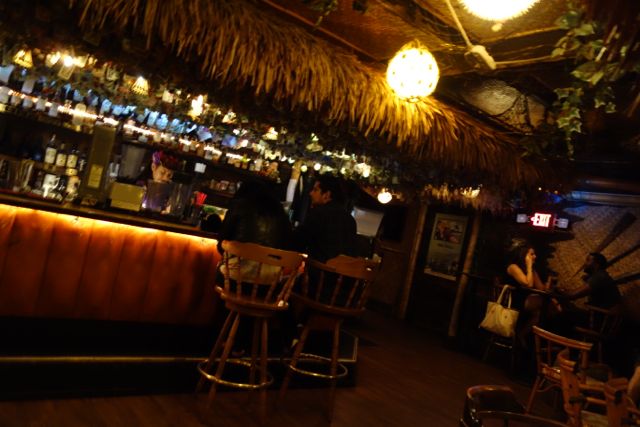
Last year I wrote up a meeting of Bay Area mayors for the Guardian, held because the Rockefeller Foundation had named San Francisco, Berkeley, Oakland, and Alameda part of their “100 Resilient Cities” program. The mayors of San Francisco, Oakland, and Berkeley all turned up (all dressed very much as local politicians do), but I didn’t spot anyone representing Alameda. One of the notes I got back in editing asked whether I could say something — anything — about that perhaps least-known of all Bay Area cities: where is it? What is it? What sort of people live there?

I ultimately described Alameda as “a smaller city spread across Alameda Island and Bay Farm Island.” The word “quaint” also found its way in (code, in this and other cases, for “train desert”). I got the opportunity for a closer look on the first stop of this road trip, where we visited friends who’d recently set up home in Alameda themselves. They told us what sort of people live there: rockabillies. Apparently the city has held out as one of the last bastions of rockabilly culture, and I held out hope that I might see one or two during our stay there. No such luck, but we did get to spend an hour or so in one of the Alameda rockabilly’s watering holes of choice: Forbidden Island Tiki Lounge.

I’m no tiki fetishist — if I was, I’d have gone to Tiki Oasis in San Diego the other week — but going from tiki bar to surviving tiki bar seems to me as good an exploratory framework as any for exploring America. (Los Angeles has an important node on that map in Los Feliz’s Tiki-Ti, or at least it had one before the place recently closed and re-opened in non-smoking form — and thus, to my mind, might as well not have re-opened at all.) Just as Forbidden Island provided an energizing burst of tiki early in this west coast road trip, Burt’s Tiki Lounge in Albuquerque will provide one early(-ish) in our cross-country road trip this fall.

On one of Forbidden Island’s walls we noticed a portrait that looked awfully familiar. I could think of no other way to identify it than Googling “green face oriential” (what other chance would I ever have?), which led to a Daily Mail article on the famous picture and its rather less famous subject, the then seventeen-year-old Monika Sing-Lee. The image lands in my wheelhouse in a number of ways, not least because of its unexpected internationalism: painted in 1952 in South Africa, by the Russian Vladimir Tretchikoff, ultimately titled The Chinese Girl. Since then it has become a kitsch icon, adorning what the Mail describes as “a million living room walls.” To that I raise my China Clipper.
